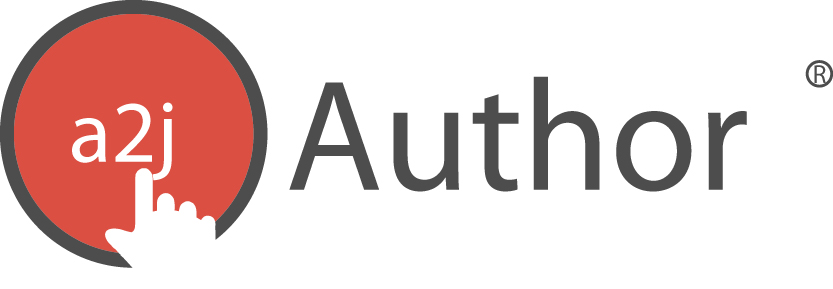From 1999-2001, the Access to Justice, Meeting the Needs of Self-Represented Litigants: A Consumer Based Approach (“Meeting the Needs”) Project [2] successfully identified the major barriers to access to justice for self-represented litigants. A key insight of the Meeting the Needs Project was that the simple act of filling out forms raises unique challenges that the many low income self-represented litigants have trouble overcoming. The project also determined that special care would be required if technology were to be introduced into the justice system to meet the needs of self-represented litigants.
These findings led to the creation of the Illinois Joint Simplified Dissolution of Marriage Prototype (“JSDM Prototype”) (see Figure 1). This prototype was custom-designed software that provided a web-based interface for pro se litigants to complete the forms required for a joint simplified dissolution of marriage in Illinois. The JSDM Prototype interface has been tested by users from theIllinois statewide legal services website and evaluated by user interface specialists at the Illinois Institute of Technology Usability Lab. The user interface developed for the JSDM Prototype is elegant, simple and powerfully effective –it is the “front-end” needed to make court document assembly and electronic filing more widely accessible to self-represented litigants. Though the JSDM Prototype proved to be a powerful tool, creating a customized user interview was time consuming and costly.
Figure 1: JSDM Prototype
In 2004 Chicago-Kent College of Law’s Center for Access to Justice and Technology partnered with the Center for Computer-Assisted Legal Instruction (“CALI”) to create A2J Author®- a factory or a software machine to make hundreds of these front-ends for court forms, at a very low cost.
A2J Author® capitalizes on the front-end interface developed in the JSDM Prototype, while providing enhanced functionality that allows authors to create guided interviews on their own. A2J Author® includes a desktop authoring tool and a web-based player that combine to enable rapid, low cost construction of customer friendly interfaces for web-based guided data collection and document assembly without the need of a professional software developer. These A2J Guided Interviews® gently lead unsophisticated end users through a web-based interview with visual and audio cues.
In addition to being user friendly for the consumer, A2J Author® is also designed to make it easy (perhaps fun) for court staff and public interest lawyers to create A2J Guided Interviews® with little technical assistance or training. A2J Author® includes a graphical flowchart map that displays the entire dialogue for the interview to the author to facilitate complex branching (see Figure 2).
Figure 2: A2J Author® Flowchart view
The "branching" feature lets the author create a dialogue that assists the end-user (self-represented litigants) by asking only the questions that need to be answered.
[2] The Meeting the Needs of Self Represented Litigants: A consumer based approach was a study completed by the National Center for State Courts (NCSC), and the Illinois Institute of Technology’s Chicago-Kent College of Law and the Institute of Design, and was funded by grants from the State Justice Institute (SJI-00-N-248), the Open Society Institute (No. 20001562), the Center for Access to the Courts through Technology, and the Illinois Institute of Technology.
